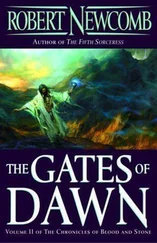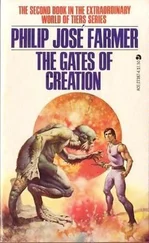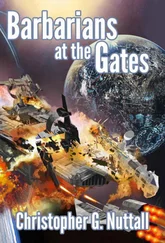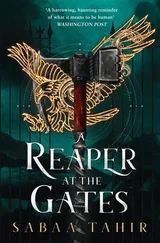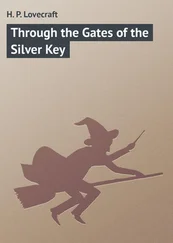On either side of the railroad embankment, Soviet tanks milled about, ramming each other and firing aimlessly. German batteries shot point-blank into these vehicles and the Russian 13th Mechanized Corps, ninety tanks strong, began to blaze and explode. Sensing a chance to completely seal the Russian breakthrough on the southern flank, 29th Division commander, Gen. Ernst Leyser, prepared to annihilate the burning enemy force. But as he did so an order reached him from Army Group B, more than two hundred miles away at Starobelsk, to pull back and guard the Sixth Army’s rear at the Don.
In the fading afternoon light of November 21, the frustrated Leyser reluctantly broke contact and rode off to the northwest. From nearby fields, tanks started to fire over his car at unseen targets. The general suddenly had no idea whether they were friends or foes.
General Leyser’s temporary victory brought a brief dividend to Paulus. News of the bloody defeat of the Russian 13th Corps quickly filtered back to Gen. Viktor Volsky’s 4th Tank Corps and the tubercular general slowed his drive, now aiming for Kalach on the Don. Still spitting phlegm into his handkerchief, the cautious officer refused to go on and insisted on reinforcements against renewed German assaults. But the Germans had gone.
Agonizing over the rupture of both his flanks, General Paulus made up his mind about the future. He authorized a dispatch to Army Group B at Starobelsk and recommended the obvious: withdrawal of the Sixth Army from the Volga and Stalingrad to positions more than a hundred miles to the southwest, at the lower Don and Chir rivers.
Army Group B commander, Freiherr von Weichs, forwarded the recommendation to OKW headquarters in Rastenburg, East Prussia, with a strong endorsement. He shared Paulus’s conviction that an immediate withdrawal was the only alternative to total disaster.
And disaster was close at hand. South of Stalingrad, General Yeremenko’s units, after crushing the Rumanians, split “Papa” Hoth’s Fourth German Tank Army in two. At a weather-beaten farmhouse outside Businovka, “Papa” Hoth sat besieged. Outside, the wind howled at the windows which were boarded over and stuffed with bits of paper and cloth. Inside, flickering candles shone on a band of weary staff officers, trying to keep in touch with their scattered combat groups on the steppe.
Messengers arrived in a stream with pleas from trapped regiments. At a solitary telephone, an officer scribbled down final words from decimated formations as they fell under Russian armor.
Hoth was helpless. With the Rumanian forces destroyed, he had too few guns and tanks to stop the enemy. It had also become apparent that the Soviet plan was breathtaking in scope. Colored arrows on the battle maps already showed a distinct arc to the northwest, around his pitiful forces, toward Kalach and its bridge over the Don. If the bridge should fall before Sixth Army pulled back from the Volga, Hoth foresaw a mass grave for the Germans in Stalingrad.
But thirteen hundred miles west of the emerging tragedy, in his Alpine Berghof, Hitler had a different view of the situation. Upon receiving Paulus’s suggestion that Sixth Army withdraw to the southwest, he responded quickly with a sharp command to hold fast.
Radio message Number 1352
TOP SECRET
Army Group B
Urgent!
21 November 42, 1525 hrs.
TO:
HQ Sixth Army
Führer Order:
Sixth Army will hold positions despite threat of temporary encirclement….Keep railroad line open as long as possible. Special orders regarding air supply will follow!
The implications of the order were stunning to consider. And while Paulus and Schmidt pondered the message, a phone call came in from Lt. Gen. Martin Fiebig, commander of the Eighth Air Corps. The generals discussed the latest events and Fiebig referred to the bridge at Kalach. Schmidt said he saw no immediate danger there and added, “The commander in chief is thinking of forming a hedgehog defense.”
“And how do you propose to keep the army supplied?” asked Fiebig.
“That will have to be done from the air.”
Fiebig was astonished. “A whole army? It’s quite impossible! I advise you not to be so optimistic.”
Fiebig hung up and immediately called his chief, General Richthofen, who then phoned Albert Jeschonnek, Goering’s deputy, and raged at him: “You’ve got to stop it! In the filthy weather we have here there’s not a hope of supplying an Army of 250,000 men from the air. It’s stark staring madness!…”
On the night of November 21, the vanguard of the 16th Panzer Division, which had left the outskirts of Stalingrad two days earlier, arrived on the Don to act as a covering force for units fleeing out of the great loop of the Don. But the division arrived too late to do more than hold a few bridges open for Rumanian and German stragglers. At the bridge he held, Lt. Eberhard von Loebbecke commanded the rear guard as a Russian tank appeared on the roadway. Loebbecke, who had lost his left arm to a French machine gunner in 1939, was standing upright before the T-34, which fired one round at him. The shell ticked his empty sleeve and exploded some yards behind him. Knocked down by the explosion, the lieutenant rose almost immediately to direct return fire. In their open turret, the Soviet crew stared in amazement at the man who had apparently lost his arm to the shell and yet bounced up off the ground without any discomfort. While they hesitated, a German antitank gun put a round into the T-34, and it blew up in front of Loebbecke’s eyes.
That night, relentless winds moaning over the steppe turned snow drifts into miniature mountain ranges on the flat prairie. The temperature fell below zero and the skies promised more snow. For thousands of square miles, west and east of the Don River, the land seemed lifeless.
But the steppe teemed with desperate men, skulking across the fields in small groups. Rumanian and German, they ran on frozen feet, propelled only by a common urge to survive. They fled through the night seeking food, shelter, and the protection of friendly guns.
Other men roamed the fields with different goals in mind. Lt. Col. Grigor Fillipov led the men of the Soviet 14th Motor Artillery Brigade away from the main body of Soviet troops moving down from the Don, and struck for the town of Kalach. Fillipov had no maps. He had only five tanks, supported by several trucks carrying infantry. His drivers turned on every light and sped through the darkness. Beside the road, hundreds of enemy soldiers waved to the “friendly” tankers, who ignored them and pushed on.
At 6:00 A.M. on November 22, Fillipov spied an old man, a Russian civilian, pulling a peasant cart, with two German soldiers walking beside him. The colonel issued whispered instructions and his men shot the Germans dead, then clambered down from the T-34s to talk to their terrified countryman.
“Uncle Vanya, which way to the bridge?” they asked. When he heard them speak his native tongue, the old man stopped trembling, climbed into the first tank and Fillipov waved his combat group on to the east.
In Kalach, the German garrison lived in a state of uneasy expectation. Refugees had been passing through for the past thirty-six hours, and the boom of heavy guns from the northwest sounded closer each hour. But no one in the garrison knew how badly the situation had deteriorated.
At Colonel Mikosch’s Engineer Training School on the hill at the eastern edge of town, pioneers had begun another regular workday, practicing the skills of street fighting, demolition expertise, and weaponry, both German and Russian. Several captured Russian tanks were being used by pupils for firing demonstrations at the range on the west side of the Don. Each day, the tanks trundled across the bridge, up the steep west bank, and onto the steppe for gunnery lessons.
Читать дальше

